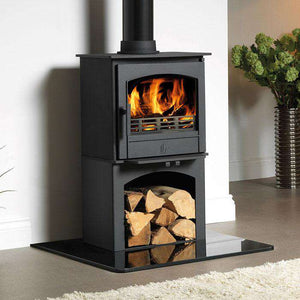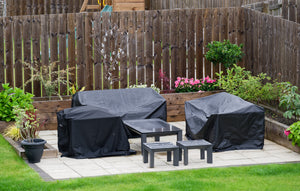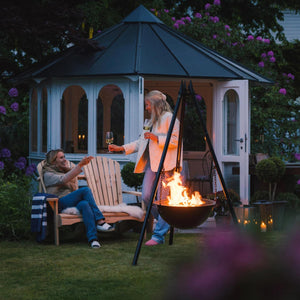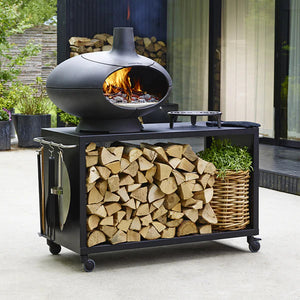Wood-Burning, Gas, or Electric Stoves: Finding the Right Fit

Selecting the ideal stove for your home heating needs is a significant decision. The three most popular options – wood-burning, gas, and electric stoves – each have unique qualities that can make a difference in your comfort and budget. Let's explore which one might be the perfect fit for your home.
Energy Efficiency:
Wood-Burning Stoves:
Wood-burning stoves are renowned for their remarkable efficiency in heating a space. They deliver quick, effective warmth, making them ideal for those frosty winter nights. Plus, they're environmentally friendly when using sustainably sourced wood.
Gas Stoves:
Gas stoves also offer efficient heating, with the convenience of instant heat at the flick of a switch. However, they're not as eco-friendly as wood-burning stoves due to the combustion of natural gas.
Electric Stoves:
Electric stoves, while still effective, are the least efficient of the three. They transform electricity into heat, which might make them better suited for smaller areas or supplementary heating.
Cost Considerations:
Wood-Burning Stoves:
The initial costs for a wood-burning stove can be relatively high due to the purchase and installation. However, the cost of wood fuel is often lower than gas or electricity.
Gas Stoves:
Gas stoves are moderately priced, and their installation can be straightforward if you have access to a gas line. Keep in mind that operating costs may vary based on gas prices.
Electric Stoves:
Electric stoves are generally the most budget-friendly in terms of upfront costs. However, their long-term operating expenses can be higher due to electricity rates.
Environmental Impact:
Wood-Burning Stoves:
Wood-burning stoves are an sustainable choice when using responsibly sourced wood on a well maintained Eco-design 2022 approved appliance. Nevertheless, burning poor or unseasoned wood on some older appliances can affect air quality.
Gas Stoves:
Natural gas is a fossil fuel, and its use contributes to greenhouse gas emissions. Some suppliers offer a renewable energy option for natural gas, which can reduce its environmental impact.
Electric Stoves:
Electric stoves produce no direct emissions at the point of use, but their environmental impact depends on the source of your electricity.
Installation and Maintenance:
Wood-Burning Stoves:
The installation of wood-burning stoves can be complex, often requiring a chimney or vent. Regular maintenance includes cleaning the chimney and ensuring safe wood storage.
Gas Stoves:
Installing gas stoves is usually straightforward, especially if you have a gas line in place. Maintenance primarily involves checking gas connections and safety features. Click here, to check out our range of gas stoves.
Electric Stoves:
Electric stoves are the easiest to install, only requiring an electrical outlet. They are also the most low-maintenance option, needing occasional cleaning and safety checks. Check out our range of electric stoves here.
Selecting the right stove for your home depends on various factors such as your energy efficiency preferences, budget constraints, environmental concerns, and installation and maintenance capabilities. Ultimately, your decision should align with your unique needs and priorities.
If you're still uncertain about which stove to choose, we're here to help. Contact us today for personalised guidance and ensure that you make an informed decision to keep your home cosy and warm all year round.
- Carl Smith








